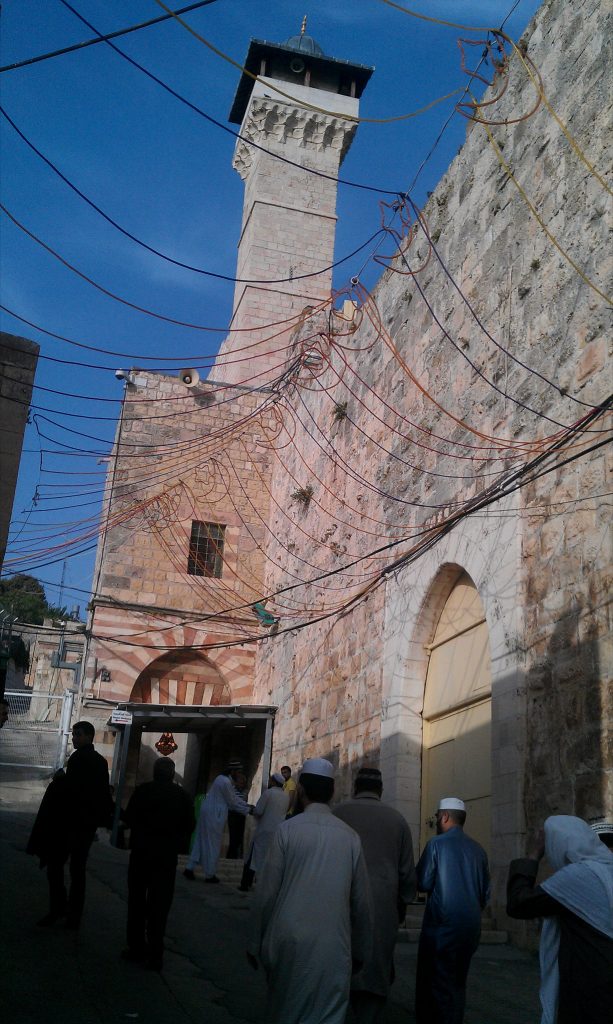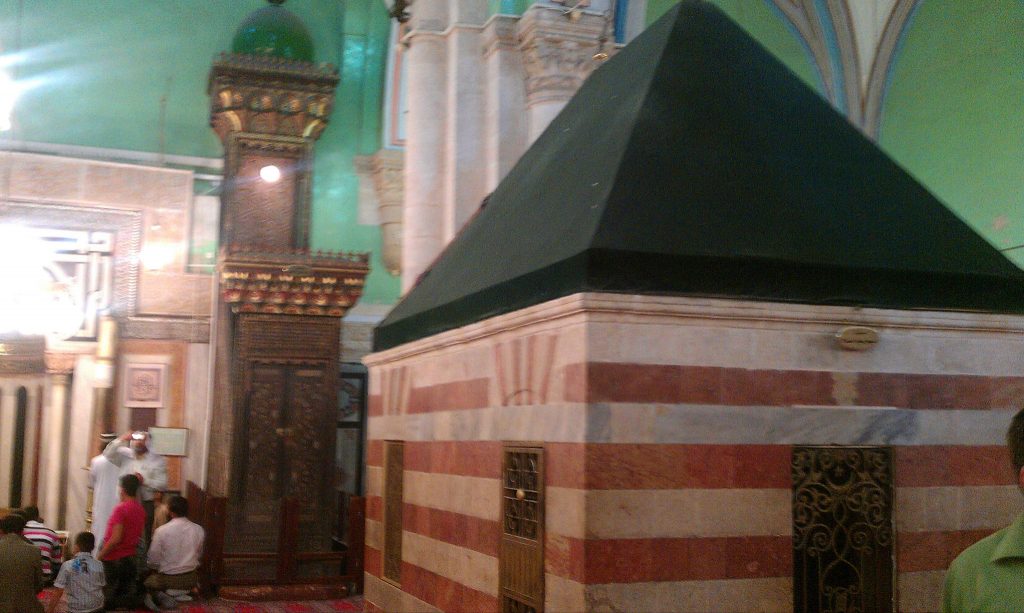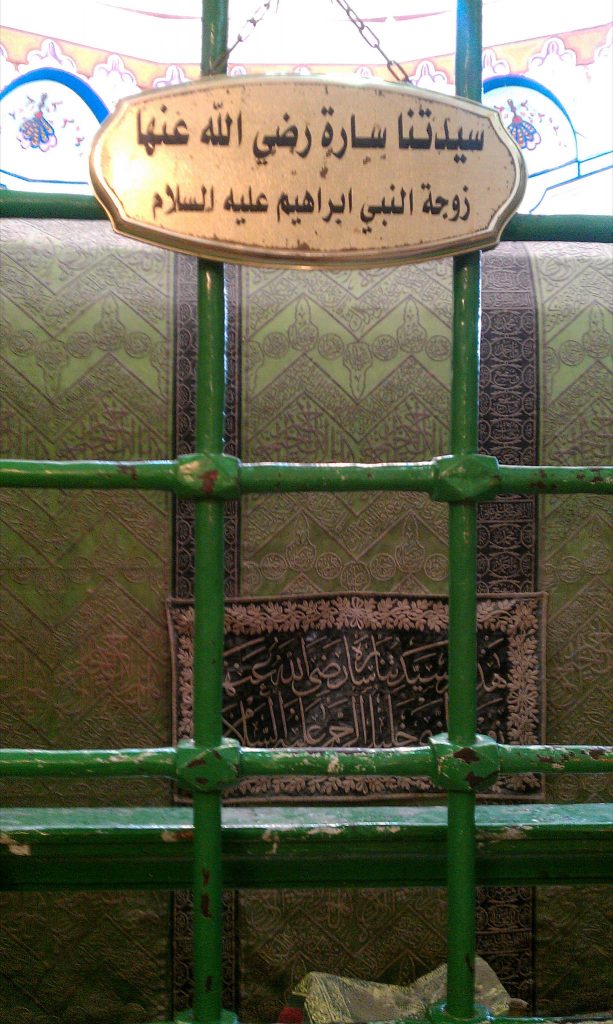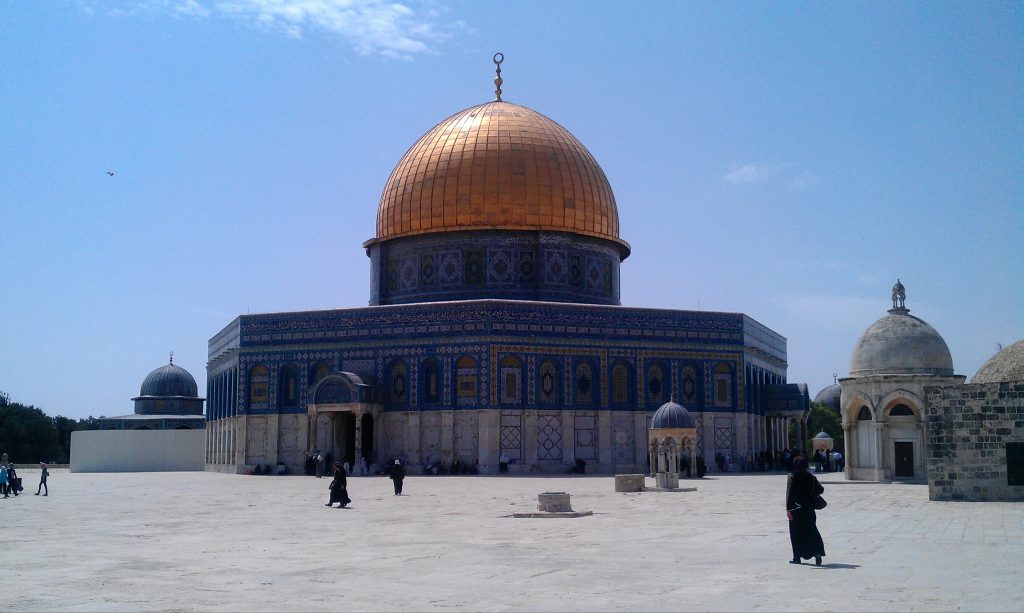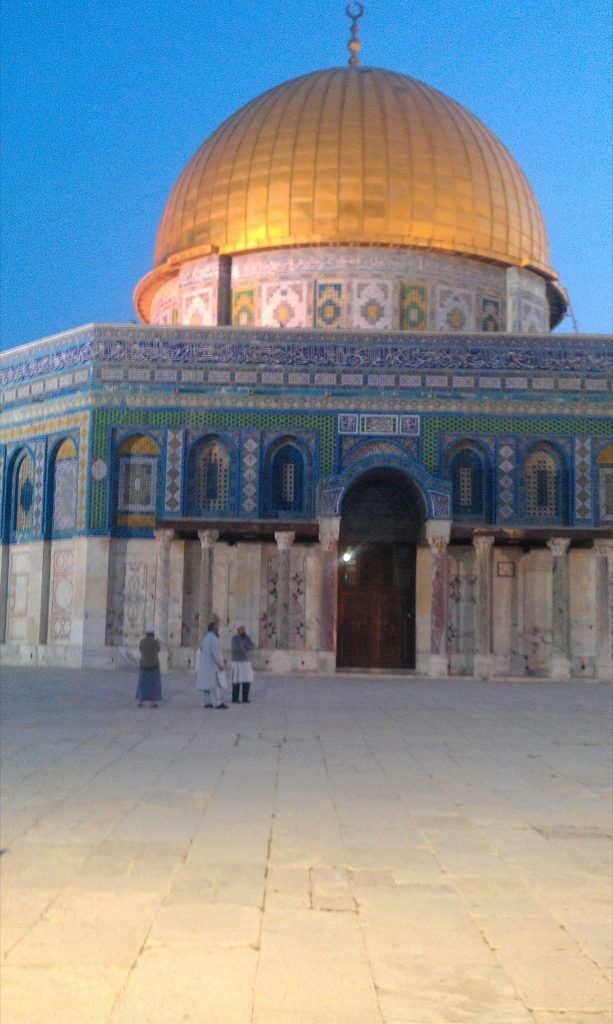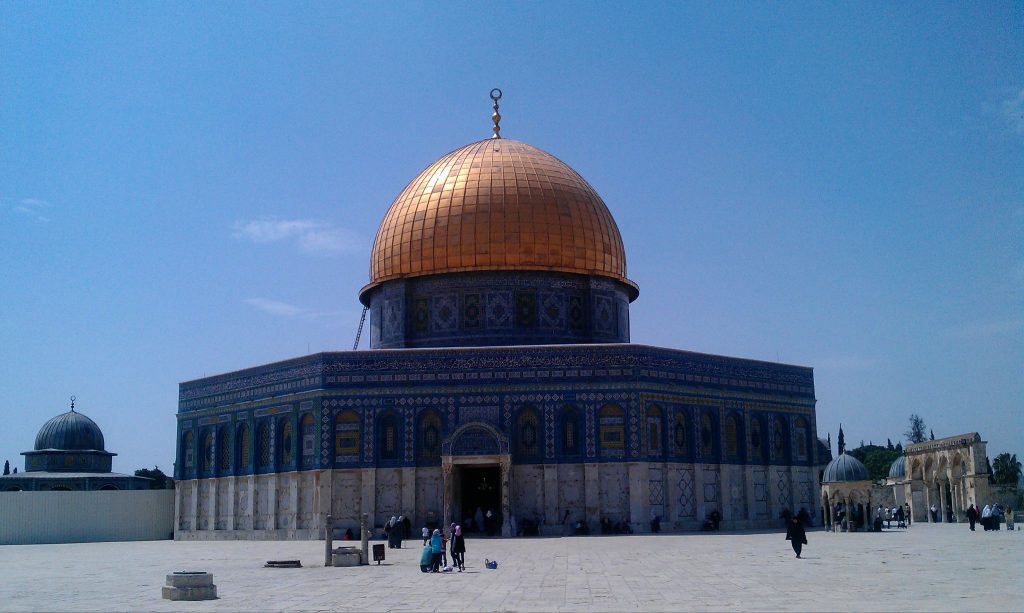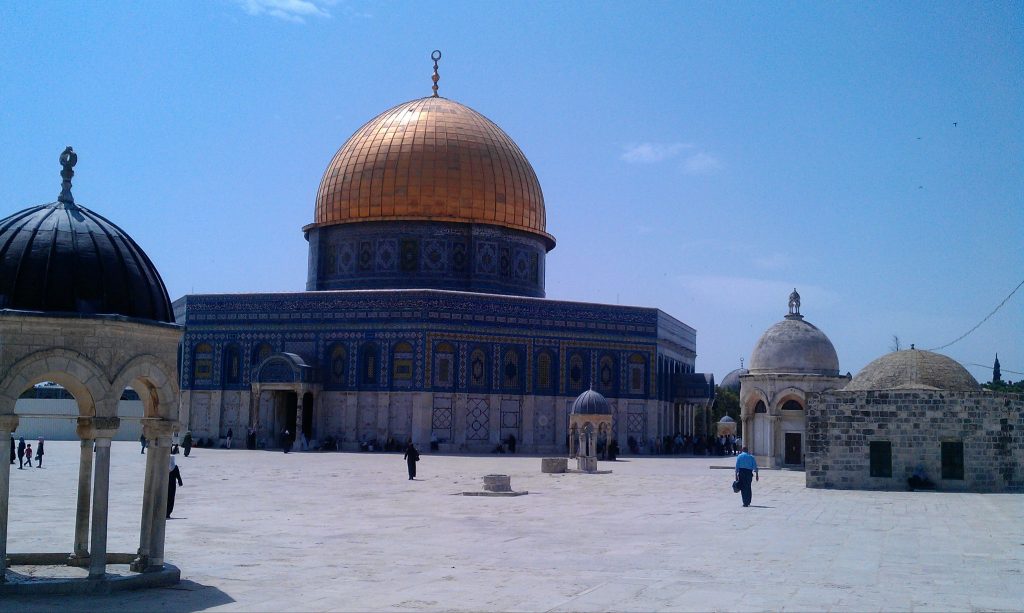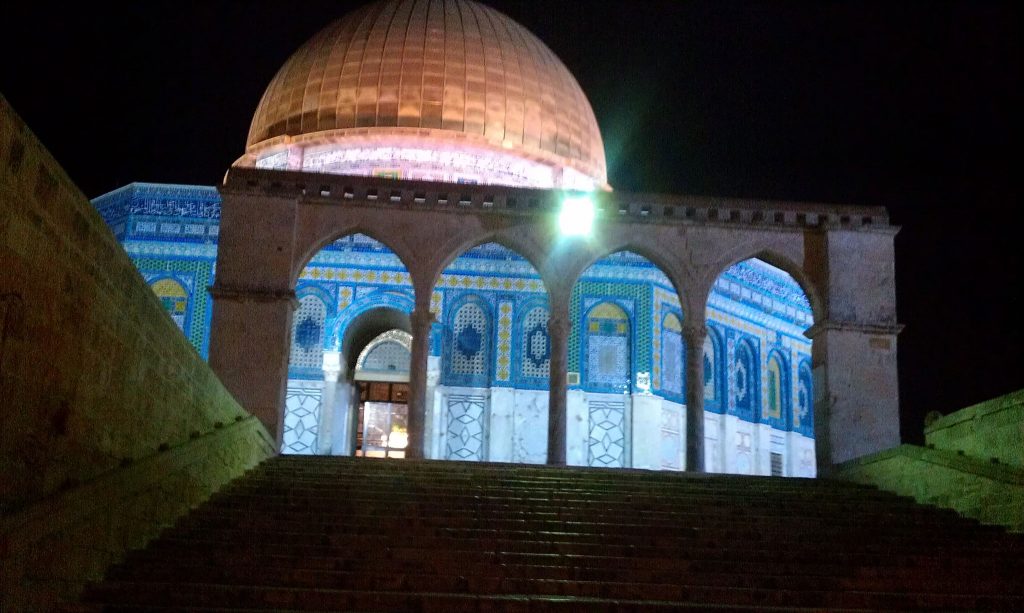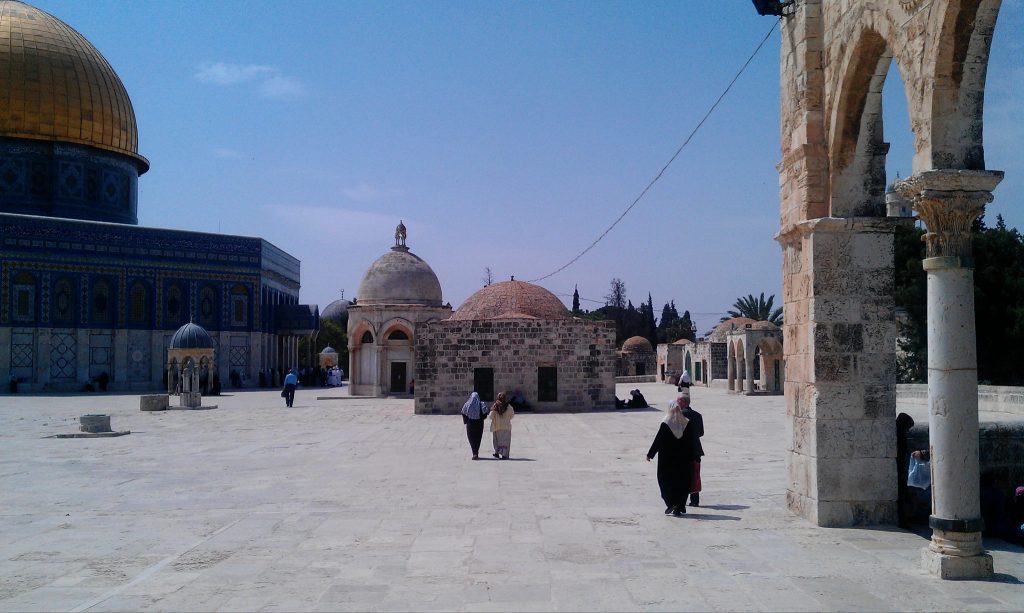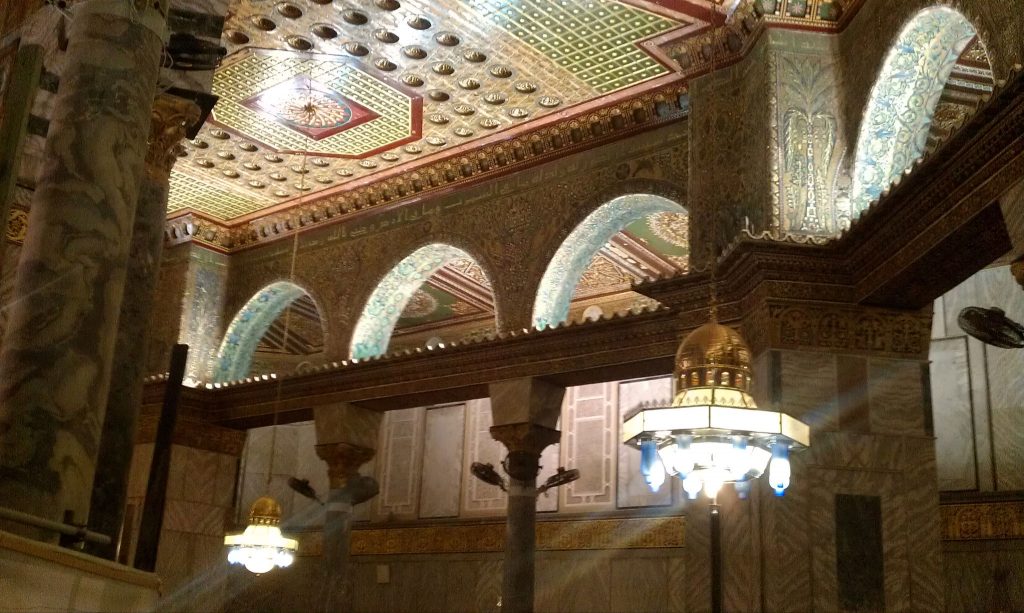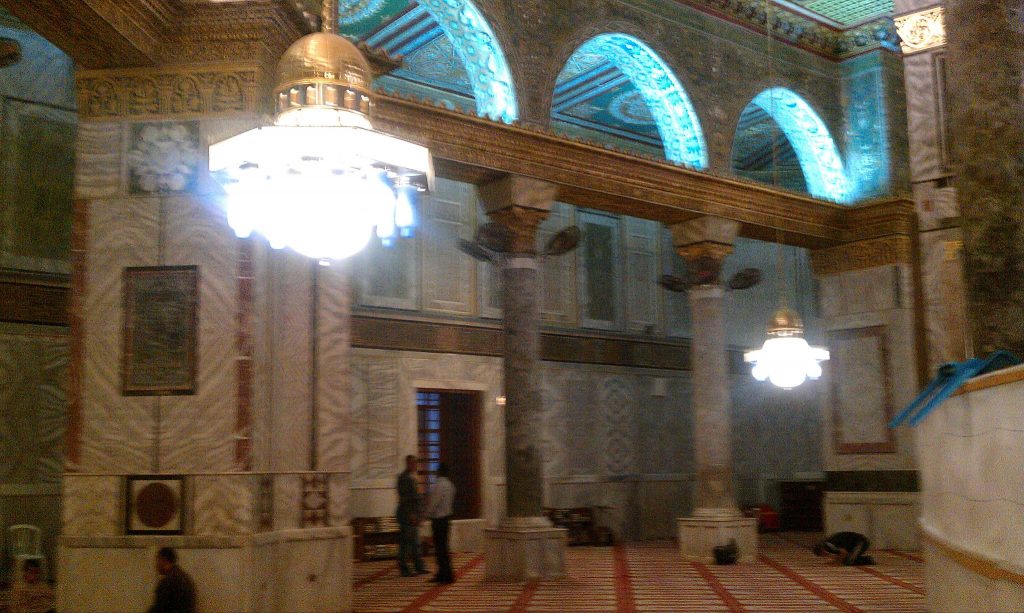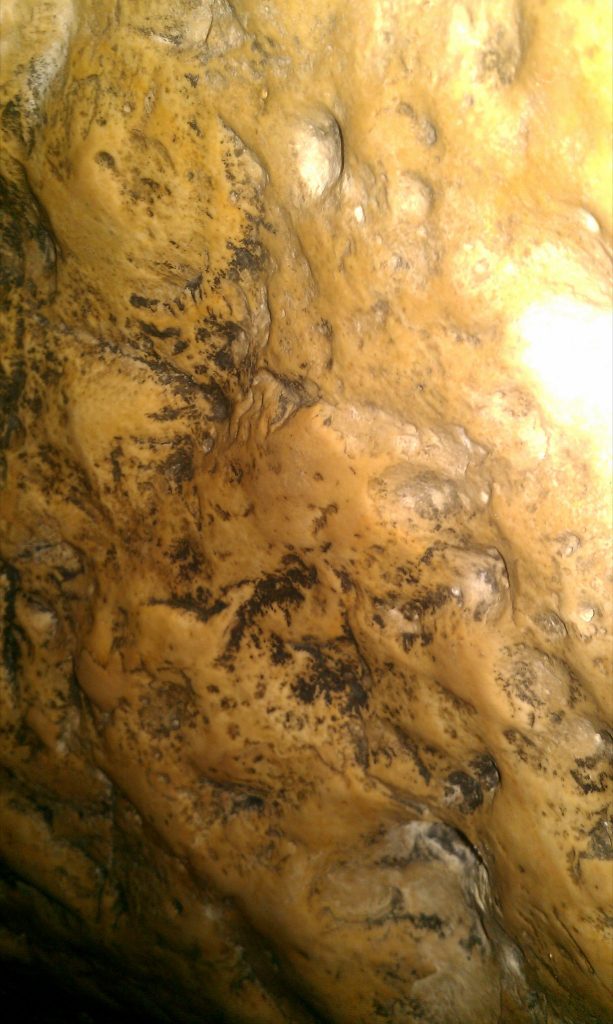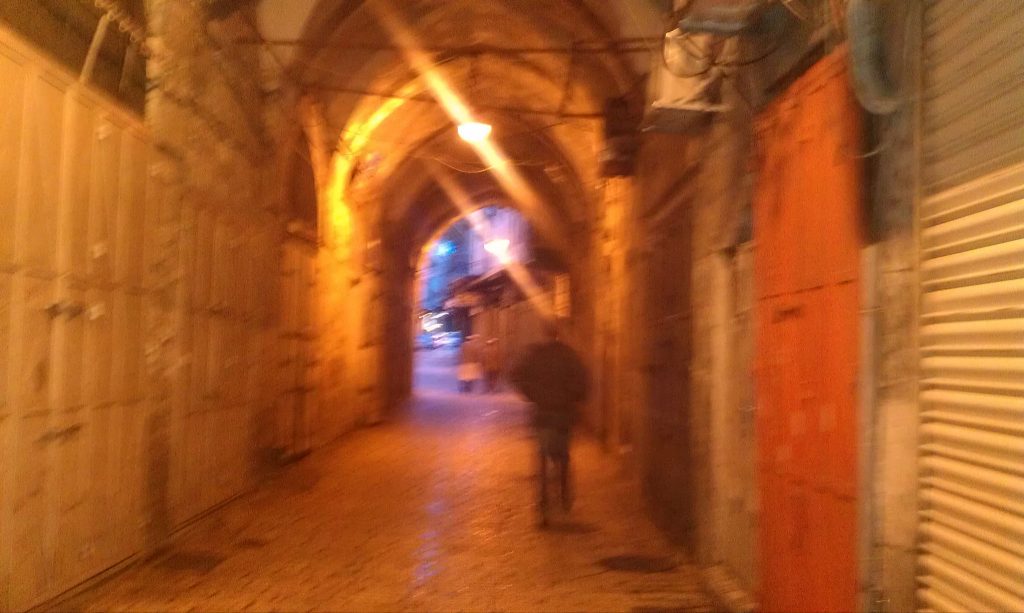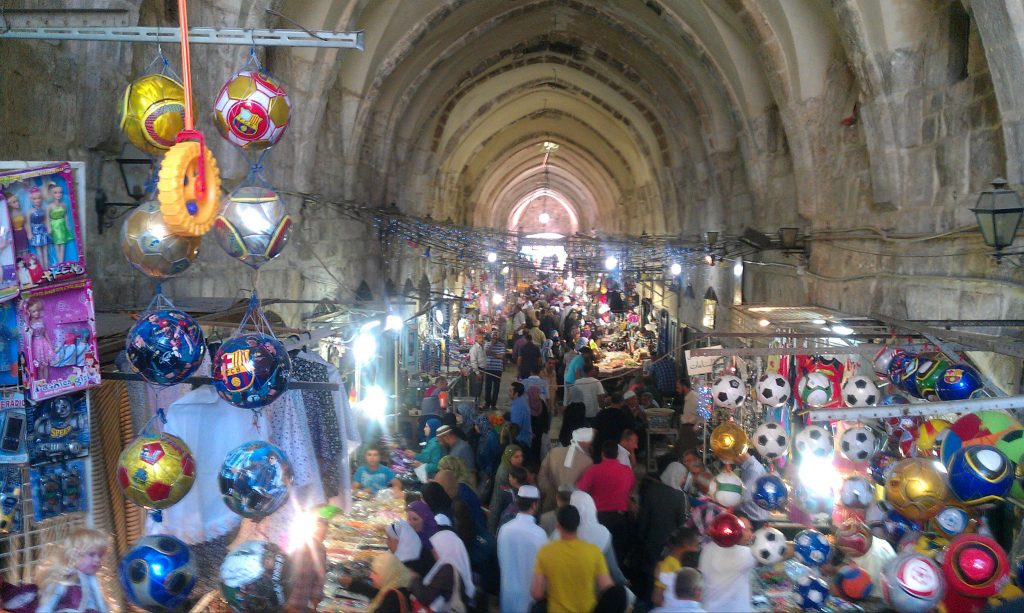Continued from Part 3
Ziyārat, and Qubbat as-Ṣakhrah
After nearly an hour’s drive we arrived at our first stop, the Dead Sea, in Jericho. It is widely believed that this was the place where the nation of Ḥaḍrat Lūṭ, عَلَيْهِ ٱلسَّلَامُ, was punished by Almighty Allāh. As it was a place of punishment, we didn’t stay long, and moved on from there. As it was lunch time, Shaikh Jamīl took us to a butcher’s shop, where he chose some fresh lamb legs. Within an hour, they prepared fresh lamb kebab sandwiches for us; remarkable. The meal was delicious and it was a real experience.
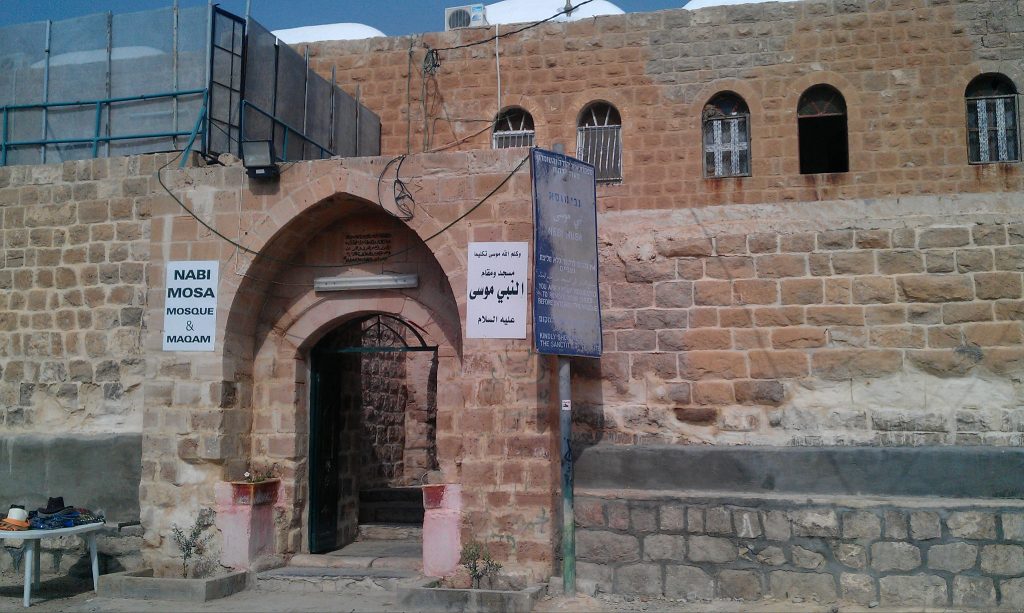
Maqām an-Nabī Mūsā, عَلَيْهِ ٱلسَّلَامُ, is situated within a large complex near Jericho, in an area that Ḥaḍrat Mūsa, عَلَيْهِ ٱلسَّلَامُ, spent some time. Many places in Palestine and Jordan have been named as Maqāms, but there is no authentic evidence to prove that the named Prophets, عَلَيْهِم ٱلسَّلَامُ, are resting there. However, there is a possibility that their resting places could be nearby. A small plaque had an inscription of a dream seen by Ḥaḍrat Ṣalāh ud-dīn al-Ayyūbī, رَحْمَةُ الله عليه, in which he was shown the location of the resting place of Ḥaḍrat Mūsā, عَلَيْهِ ٱلسَّلَامُ. This is where we presented our Ṣalāms to this great Prophet, عَلَيْهِ ٱلسَّلَامُ.
From here we moved on to an area known as Ḥalḥūl, where Maqam Nabi Yunus, عَلَيْهِ ٱلسَّلَامُ, is located, in a Masjid constructed at the site.
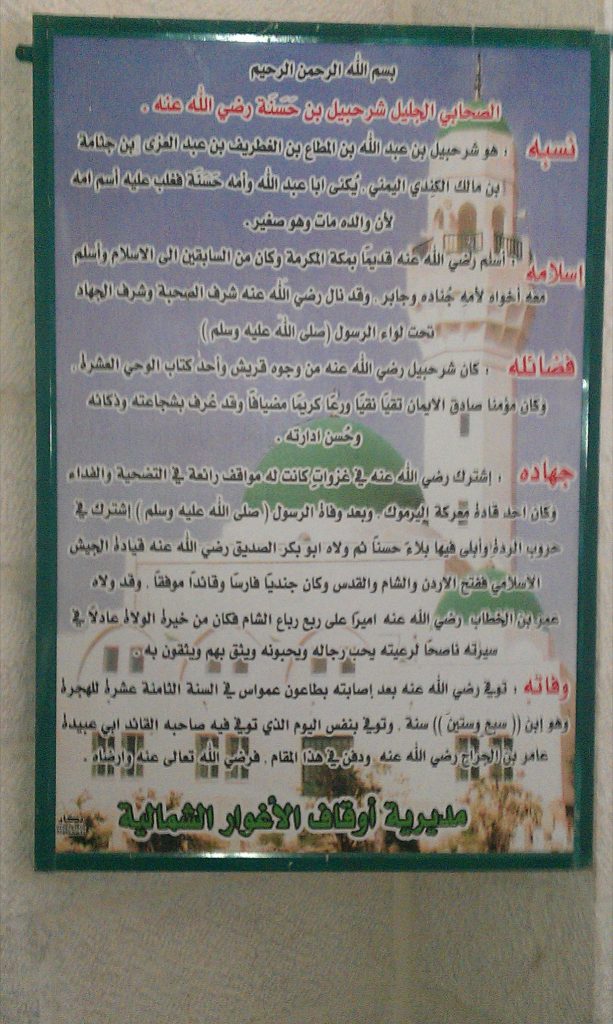
From here, Shaikh Jamīl took us to see Masjid Shuraḥbīl ibn Ḥasana, رَضِيَ ٱللَّٰهُ عَنْهُ, which had been constructed very recently, financed by the Muslims of Preston (UK) via Shaikh Ilyās Desāi. What a wonderful achievement; a nice small Masjid for the local Palestinians.
From here we moved on to Hebron, our destination was the famous historical Masjid al-Khalīl (al-Ḥaram al-Ibrāhīmī, known to Jews as the Cave of the Patriarchs). We had to pass through very thorough security here.
This is one of the most important Masjids in Palestine, constructed upon the cemetery which houses the graves of four of the most illustrious Prophets عَلَيْهِم ٱلسَّلَامُ. Part of the Masjid has been taken over by the Jews and converted into a synagogue. Underneath the Masjid lie the resting places of Ḥaḍrat Ibrāhīm عَلَيْهِ ٱلسَّلَامُ, his son Ḥaḍrat Isḥāq, عَلَيْهِ ٱلسَّلَامُ, his son Ḥaḍrat Ya’qūb, عَلَيْهِ ٱلسَّلَامُ, and his son Ḥaḍrat Yūsuf, عَلَيْهِ ٱلسَّلَامُ, and all their wives, سُبْحَانَ الله ,مَا شَآءَ الله. What a blessed place!
This is also the Masjid where many Palestinians were martyred in Fajr Ṣalāh a while ago. The area is always very tense, with frequent closures of the site for visitors to the Masjid (Muslim side).
It had been a long day as we made our way to Maqām Lūṭ, عَلَيْهِ ٱلسَّلَامُ, where another small Masjid had been built at this site.
From here, we returned back to Bethlehem and took the bus back to Jerusalem, arriving at the Dome of the Rock (Qubbat as-Ṣakhrah) in time for ‘Ishā Jamā’ah. The trip had cost us 70 shekels each (£12pp).
The Dome of the Rock is a magnificent building with a beautiful interior. The hexagonal shape of the building with the gold dome and inscription of Sūrah Yāsīn all around makes it outstanding.
After ‘Ishā, we made our way to the basement area, where the rock from which our Prophet, صَلَّىٰ ٱللَّٰهُ عَلَيْهِ وَسَلَّمَ, ascended to the heavens and went for Mi’rāj, lies. We got the opportunity to pray at the Mihrābs of Ḥaḍrat Mūsā, عَلَيْهِ ٱلسَّلَامُ, and Ḥaḍrat Ibrāhīm, عَلَيْهِ ٱلسَّلَامُ, which are within this basement. The Qubbah is used mostly by the ladies, and 5 times Ṣalāh with Jamā’ah also takes place here.
We then went looking for a place to eat. As everything starts to close after Maghrib, hardly any shop is open after ‘Ishā. All takeaways and restaurants were shut, but one restaurant owner very kindly re-opened for us where we had pizza & chips.
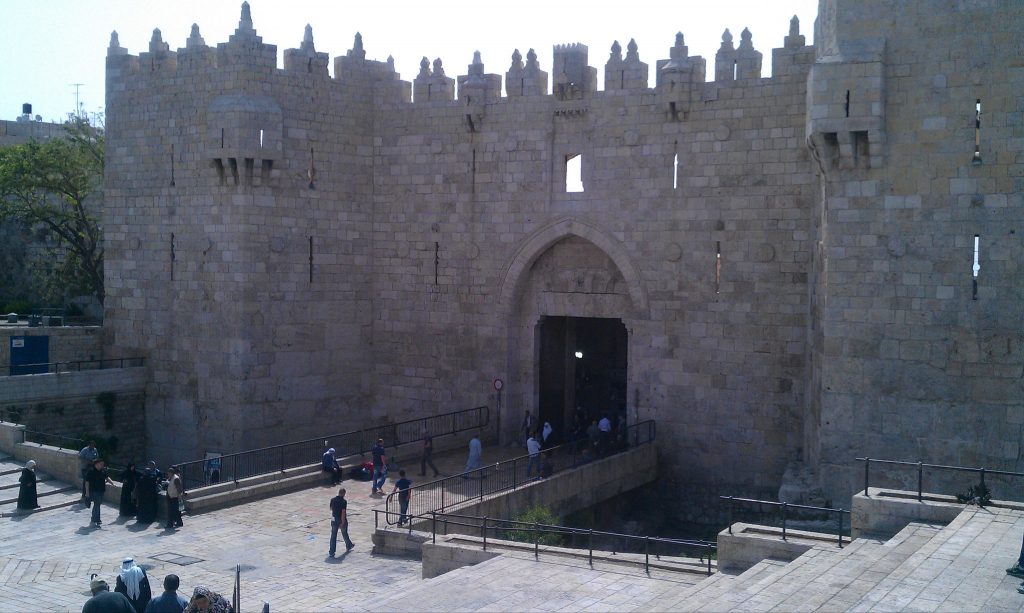
Our hotel was situated within the Old City which has 8 gates, and our entrance was always from the Damascus Gate. We were informed that one of the gates was shut.
The alleys of the Old City are really amazing. A number of narrow streets lined with shops and stalls on both sides, some connected by steps, many laid with cobblestones, and cleaned very thoroughly every night. The atmosphere is buzzing and electric during the day, and almost deserted at night.
Hāshimī Hotel is 5 minutes from Damascus Gate, conveniently located, and has some very friendly staff, like Ṣāliḥ and Amjad. The rooms are small, and bathrooms are very narrow, so maybe not ideal for families, but if you want to get the buzz of the Old City, then Hāshimī Hotel is the place to be.
We returned back to the Hotel and before sleeping went to a nearby call centre, Mikes Center Tours, where we made very good friends with the owner Munīb. We used to end up here nearly every night, for very cheap phone calls, nice ice cold drinks and a friendly chat with Munīb. His story of how he became a practising Muslim, and the imprisonment of his son for blinding an Israeli soldier, which earned him a 10 year prison sentence, were very touching, Munīb used to mention his son with so much pride, مَا شَآءَ الله.
The next morning, Thursday 3rd May, we were in Masjid al-‘Aqṣā for the Azān of Tahajjud, and stayed in the Masjid till after Fajr. The Masjid is locked after ‘Ishā and opens at Tahajjud time. Israelis patrol outside the Masjid doors, and Palestinian officials on the inside. We rested for a while, then had breakfast, where we met Maryam, the cook, who had an emotional story to tell. It was so sad to hear that her husband and son were in prison.
Continued in Part 5
